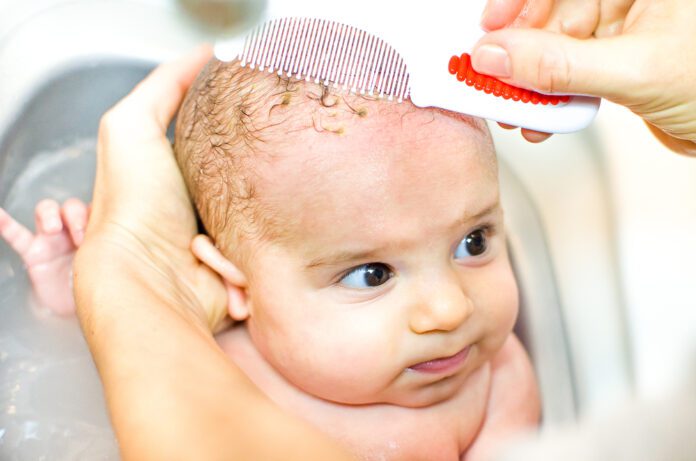Overview Of Cradle Cap
Cradle cap is seborrheic dermatitis that affects the scalp of infants
Cause Of Cradle Cap
Seborrheic dermatitis is a common, inflammatory skin condition that causes flaky, white to yellowish scales to form on oily areas such as the scalp.
The exact cause of this condition is not known. Doctors think the condition is due to oil glands in the baby’s scalp producing too much oil.
Cradle cap is not spread from person to person (contagious). It is also not caused by poor hygiene. It is not an allergy, and it is not dangerous.
Cradle cap often lasts a few months. In some children, the condition can last until age 2 or 3.
Symptoms
Parents may notice the following of cradle cap:
- Thick, crusty, yellow, or brown scales on your child’s scalp
- Scales may also be found on the eyelids, ear, around the nose
- Older infant scratching affected areas, which may lead to infection (redness, bleeding, or crusting)
Exams & Tests
The health care provider can often diagnose cradle cap by looking at your baby’s scalp.
Treatment Of Cradle Cap
Antibiotics will be prescribed if your baby’s scalp has an infection.
Depending on how severe the condition is, other medicines may be prescribed. These may include medicated creams or shampoos.
Most cases of cradle cap can be managed at home. Here are some tips:
- Massage your baby’s scalp gently with your fingers or a soft brush to loosen the scales and improve scalp circulation.
- Give your child daily, gentle shampoos with a mild shampoo as long as there are scales. After scales have disappeared, shampoos can be reduced to twice weekly. Be sure to rinse off all shampoo.
- Brush your child’s hair with a clean, soft brush after each shampoo and several times during the day. Wash the brush with soap and water each day to remove any scales and scalp oil.
- If cradle cap scales do not easily loosen and wash off, apply mineral oil to the baby’s scalp and wrap warm, wet cloths around the head for up to an hour before shampooing. Then, shampoo. Remember that your baby loses heat through the scalp. If you use warm, wet clothes with mineral oil, check often to be sure that the clothes have not become cold. Cold, wet clothes can reduce your baby’s temperature.
- If the scales continue to be a problem or your child seems uncomfortable or scratches the scalp all the time, call your child’s provider.



